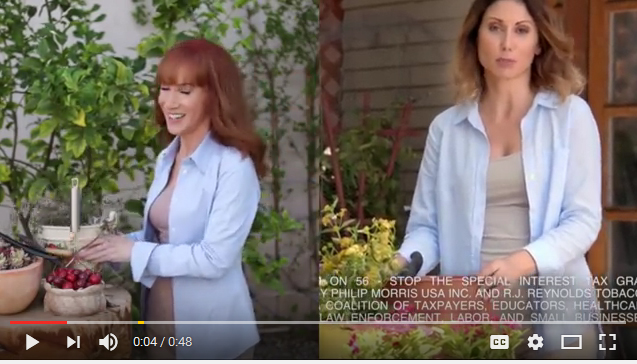November 9, 2016
California voters handed Big Tobacco a resounding defeat Tuesday when they passed Proposition 56 to raise the cigarette tax by US$2 a pack (with increases in e-cigarettes and other tobacco products). This is the first increase in cigarette taxes in California in 18 years.
The money will fund health care for poor people and reinvigorate California’s tobacco control program.
Economists project that the effect of the price increase alone will cut smoking prevalence from today’s 9.4 percent to 7.1 percent in 2020; the fact that Prop 56 quadruples the funding for the state’s aggressive tobacco control program will make that effect even bigger.
The drop in smoking due to Prop 56 is so large that it will save California families, taxpayers and businesses $1 billion a year in health costs starting next year.
November 1, 2016
Despite Big Tobacco spending US$71 million to snuff out Proposition 56, an initiative to raise cigarette taxes by $2, 56 percent of Californians said they planned to vote yes just 13 days before the election.
California is the biggest tobacco market in the country, but at just 87 cents, it has one of the lowest cigarette taxes in the country. That low tax makes cigarettes more affordable and boosts tobacco sales and profits.
Prop 56 will cut tobacco sales by a quarter of a billion dollars a year, which will take a hefty chunk out of Big Tobacco’s profits.
Only tobacco companies are fighting the tax
October 31, 2016

As part of their ongoing deceptive campaign opposing California Proposition 59, they ran an ad in which a "white lady gardening" who bore a remarkable resemblance to actress Kathy Griffin urged women to vote against Prop 56. As the ad urged, Griffin "followed the money" and found that Big Tobacco paid for the ad.
She then posted her own ad on YouTube correcting the record.
I've been telling the Yes on 56 campaign that the best response to Philip Morris and Reynolds' disinformation campaign was humor. Griffin proves it. The campaign should get her permission and put the video on TV.
October 30, 2016
The first hearing on Forsyth v. MPAA et al. — the class action lawsuit alleging that the MPAA, member studios, and NATO's ratings system defrauds parents by giving movies with smoking PG or PG-13 ratings — took place in federal court on Friday, October 28, in federal court in San Francisco.
The hearing was on the defendants’ motion to dismiss the suit. As summarized in this news report, the judge questioned some claims the suit makes.
We will let you know when the ruling on the motion is issued. Regardless of how the judge rules, an appeal is likely.
This item is cross-posted from the Smoke Free Movies blog at https://smokefreemovies.ucsf.edu/blog/first-hearing-held-lawsuit-over-mp...
October 17, 2016
Stanton Glantz, Professor of Medicine and Director of the UC San Francisco Center for Tobacco Control Research and Education is seeking a postdoctoral fellow to conduct policy research in the evolving policy environment around marijuana policy and how it interacts with tobacco control policymaking. This work will include research on the state and local policymaking process as it relates to tobacco control. The project involves preparing detailed case studies on policy making in states with a variety of marijuana policies, including research on the development and passage (or defeat) of relevant legislation, implementation, funding and management of marijuana and tobacco control programs, efforts of public health advocates to promote public health programs, and opposition to public health policies by the marijuana and tobacco industries and their allies and surrogates. Data collection will involve researching written records, relevant laws, analyzing campaign contribution information, conducting interviews and doing field research.
